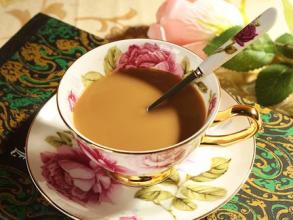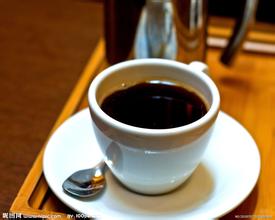Introduction to the characteristics of Yega Sheffivoka Coffee Flavor Manor in Ethiopia
Many people know Brazilian coffee, and some even think it is a British specialty. In fact, Ethiopia is the hometown of coffee. The real name "Kaffa" of coffee comes from a place called "Kafa" in Ethiopian. Local residents became extremely excited when they found that cattle and sheep had eaten a kind of red seed, and then began to soak water with the seed to refresh themselves, which later evolved into today's coffee. In the hearts of Ethiopians, drinking coffee is like Christians praying for a fixed time. Fixed location, as well as fixed utensils and rituals. Generally speaking, "Watt" and "Fitterfield" are Ethiopian specialties in the evening. The main ingredients of these two dishes are beef, mutton or chicken, but there is some distinction in the main seasoning. "Watt" mainly adds curry powder and chili peppers, while "Fitterfield" mainly adds cream and chili peppers and other spices. The cooking method is stewed.
Ethiopian wine, beer and brandy are all good and inexpensive. Imported wine is available at any time. The local people mainly drink Talla--, a wine made from barley and oats. Although poor, people are content, calm and polite. Moss bran is a specialty food here. Ethiopia's famous "Angela" is made from moss bran flour and has sheltered the local intestines and stomach for 3, 000 years.
Boutique coffee beans [sun Yega Xuefei]: it is recommended to use 15 grams of powder 89 degrees water temperature, small Fuji grindability 4 Little Fuji V60 filter cup, water powder ratio 1:15, the first water injection 30g, stew 25s, the second water injection 104g water cut off, the second water injection to 230g water, the end of the water, extraction time is about 2v 12s
[washing Yejia Xuefei]: it is recommended to use 15 grams of powder at 92 degrees water temperature, water to powder ratio 1 to 15 ~ V60 filter cup, water to powder ratio at 1:15, first water injection 30 g, stew 28s-30s, second water injection 110g water cut off, the second water injection to 230g water, no water in the tail section, extraction time about 2Jiang 15s; Ethiopian coffee.
In this way, the hands can feel the comfort of Yega Xuefei, just like flowers promote taste buds and olfactory cells in the nasal cavity. The coffee beans after harvest must enter the treatment program immediately, otherwise they will begin to ferment, making the coffee beans have a bad smell. There are two methods of treatment: "solarization" and "washing", which will cause different flavors. Sun-dried beans have a complete natural mellow flavor, gentle aroma and more gum; washing rules have a good mellow taste, high aroma and lively sour taste.
1. Natural solarization (Natural/Dried-in-the-Fruit):
The fruit begins the process of sun drying without treatment after picking. This is the oldest method of treatment in existence. The drying process of Yejashafi coffee usually lasts about 4 weeks. The method of handling must be very strict to ensure that the coffee does not lose any flavor. The natural sun method requires the local climate to be extremely dry. In some areas, people use dryers to assist in the drying process of coffee fruit (the hot air of the dryer can speed up the drying process and help people control the degree of drying).
two。 Complete washing method (Washed)
The peel, pulp and mucous membrane are removed by washing and fermentation. farms that use the washing method must build washing ponds and be able to introduce an endless supply of live water. During the treatment, the finished beans are put into the pool and passed back and forth, using the friction of beans and the power of running water to wash the coffee beans until smooth and clean. After washing, at this time, the coffee beans are still wrapped in the pericarp with a moisture content of 50%. They must be dried to reduce the moisture content to 12%, otherwise they will continue to be mellow, moldy and rotten. The better treatment is to use sunlight to dry, although it will take 1 ~ 3 weeks, but it has a very good flavor and is very popular with Yega Chefevoca.

Important Notice :
前街咖啡 FrontStreet Coffee has moved to new addredd:
FrontStreet Coffee Address: 315,Donghua East Road,GuangZhou
Tel:020 38364473
- Prev

Introduction to the honey-like sweet aroma of Ethiopia's Yega Sheffield Adorto Coffee Flavor Manor
In February 1977, Lieutenant Colonel Mengistu Haier Maryam (MENGISTU HAILE MARIAM) launched a military coup and served as Chairman of the interim military Administrative Council and head of State. In 1979, the Ethiopian Labor people's Party Organization Committee, dominated by soldiers, was established to implement an one-party system. In 1984, the Ethiopian Workers' Party was formed according to the Soviet Communist Party model. Mengistu, September 1987
- Next

Introduction to the Flavor of Fine Coffee with many advantages in Costa Rica Coffee Bean Manor
Tarrazu in Costa Rica is one of the major coffee producing areas in the world. The coffee produced is light and pure in flavor and pleasant in aroma. Costa Rica, with its fertile volcanic soil and good drainage, is the first country in Central America to grow coffee and bananas for commercial value. Coffee and bananas are the country's main exports. In 1729, coffee was introduced from Cuba
Related
- Detailed explanation of Jadeite planting Land in Panamanian Jadeite Manor introduction to the grading system of Jadeite competitive bidding, Red bid, Green bid and Rose Summer
- Story of Coffee planting in Brenka region of Costa Rica Stonehenge Manor anaerobic heavy honey treatment of flavor mouth
- What's on the barrel of Blue Mountain Coffee beans?
- Can American coffee also pull flowers? How to use hot American style to pull out a good-looking pattern?
- Can you make a cold extract with coffee beans? What is the right proportion for cold-extracted coffee formula?
- Indonesian PWN Gold Mandrine Coffee Origin Features Flavor How to Chong? Mandolin coffee is American.
- A brief introduction to the flavor characteristics of Brazilian yellow bourbon coffee beans
- What is the effect of different water quality on the flavor of cold-extracted coffee? What kind of water is best for brewing coffee?
- Why do you think of Rose Summer whenever you mention Panamanian coffee?
- Introduction to the characteristics of authentic blue mountain coffee bean producing areas? What is the CIB Coffee Authority in Jamaica?

